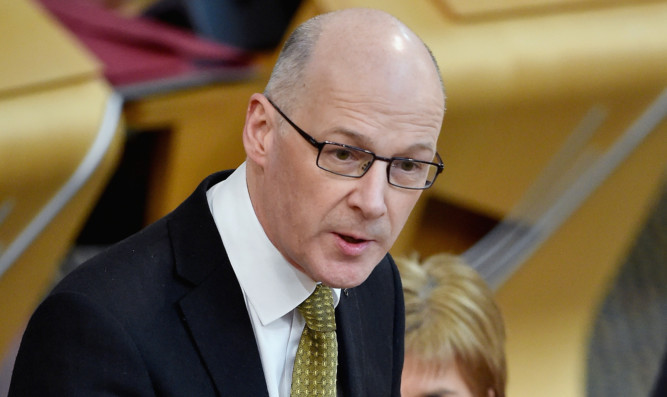Crucial talks over how Scotland will be funded when new powers are devolved to Holyrood continue in Edinburgh today.
Greg Hands, the UK Chief Secretary to the Treasury, has cleared his diary to travel north for a day of discussion with Scottish Deputy First Minister John Swinney.
The UK and Scottish governments have been have been locked in protracted negotiations over the fiscal framework for the Scotland Bill, which sets out how the block grant will be altered when MSPs get new tax raising powers.
The Scottish Government has set a deadline of Friday February 12 for a deal to be agreed, with SNP deputy leader Stewart Hosie warning there is still “a way to go” before that can happen.
But Scottish Secretary David Mundell has said he is confident an agreement can be reached.
He told BBC Scotland Westminster is “quite willing to look at accommodating” SNP concerns that Scotland could lose out financially if its population grows more slowly than the rest of the UK.
“We want to reach an agreement, we’re taking forward issues the Scottish Government have raised in relation to population,” the Conservative said.
He added: “It takes two to reach a deal but we’re not walking away. I know the people of Scotland want to see the Scottish Parliament have extensive powers over tax and welfare, become that powerhouse parliament.”
Mr Swinney announced on Sunday that papers from the talks will be made public before March 23, the date when Holyrood is dissolved ahead of Scottish elections.
The Deputy First Minister said people had a right to see “all the key documents” and he would publish them.
Both Mr Swinney and First Minister Nicola Sturgeon have warned they will pull the pull the plug on the Scotland Bill by recommending MSPs veto the legislation if the two governments cannot strike a deal on the fiscal framework.
They insist they are “not bluffing”, with the SNP claiming a bad deal could cost Scotland billions of pounds in the long-term.
Mr Swinney said: “‘I want to agree a fiscal framework with the UK Government that is fair to Scottish and to UK taxpayers and allows us to properly exercise the new powers without fear of penalty.
“I am working flat out to get that and giving all of the time possible to do a deal. With time running out, we need to make substantial progress.”
He said: “The fiscal framework must remain true to Smith Agreement which said the Barnett Formula will remain and that Scotland should be no better or worse off as a result of having new powers.
“That cannot be undermined, and I will not sign anything that risks systematically cutting Scotland’s budget, regardless of anything that this or future Scottish Governments do.”
Shadow Scottish secretary Ian Murray meanwhile urged both administrations to lay out their principles for the negotiations, saying people “deserve to understand the issues at stake”.
The Labour MP has written to Mr Hands and Mr Swinney, stating that without this it “is difficult to assess which of the methods that have been outlined is preferable”.
He said: “These negotiations are too important to be happening behind closed doors, with no explanation of what is guiding each party.
“People across Scotland deserve better than this back and forth blame game. They deserve answers and need to understand the issues at stake.
“I would be grateful if you could consider this ahead of today’s meeting and, at the very least, provide a more complete account of the meeting.”
